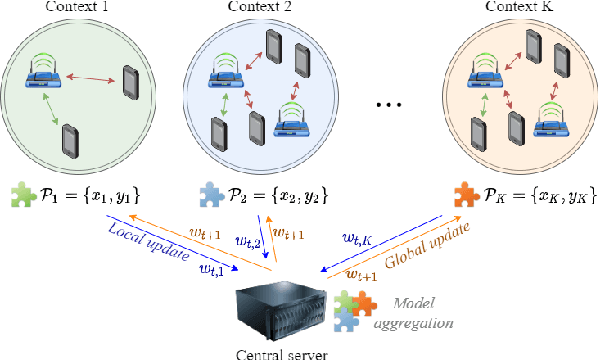Ozlem Yildiz
Charlie
3D Beamforming Through Joint Phase-Time Arrays
Jan 01, 2024Abstract:High-frequency wide-bandwidth cellular communications over mmW and sub-THz offer the opportunity for high data rates, however, it also presents high pathloss, resulting in limited coverage. To mitigate the coverage limitations, high-gain beamforming is essential. Implementation of beamforming involves a large number of antennas, which introduces analog beam constraint, i.e., only one frequency-flat beam is generated per transceiver chain (TRx). Recently introduced joint phase-time array (JPTA) architecture, which utilizes both true time delay (TTD) units and phase shifters (PSs), alleviates analog beam constraint by creating multiple frequency-dependent beams per TRx, for scheduling multiple users at different directions in a frequency-division manner. One class of previous studies offered solutions with "rainbow" beams, which tend to allocate a small bandwidth per beam direction. Another class focused on uniform linear array (ULA) antenna architecture, whose frequency-dependent beams were designed along a single axis of either azimuth or elevation direction. In this paper, we present a novel 3D beamforming codebook design aimed at maximizing beamforming gain to steer radiation toward desired azimuth and elevation directions, as well as across sub-bands partitioned according to scheduled users' bandwidth requirements. We provide both analytical solutions and iterative algorithms to design the PSs and TTD units for a desired subband beam pattern. Through simulations of the beamforming gain, we observe that our proposed solutions outperform the state-of-the-art solutions reported elsewhere.
Pathfinding Neural Cellular Automata
Jan 17, 2023



Abstract:Pathfinding makes up an important sub-component of a broad range of complex tasks in AI, such as robot path planning, transport routing, and game playing. While classical algorithms can efficiently compute shortest paths, neural networks could be better suited to adapting these sub-routines to more complex and intractable tasks. As a step toward developing such networks, we hand-code and learn models for Breadth-First Search (BFS), i.e. shortest path finding, using the unified architectural framework of Neural Cellular Automata, which are iterative neural networks with equal-size inputs and outputs. Similarly, we present a neural implementation of Depth-First Search (DFS), and outline how it can be combined with neural BFS to produce an NCA for computing diameter of a graph. We experiment with architectural modifications inspired by these hand-coded NCAs, training networks from scratch to solve the diameter problem on grid mazes while exhibiting strong generalization ability. Finally, we introduce a scheme in which data points are mutated adversarially during training. We find that adversarially evolving mazes leads to increased generalization on out-of-distribution examples, while at the same time generating data-sets with significantly more complex solutions for reasoning tasks.
Federated Spatial Reuse Optimization in Next-Generation Decentralized IEEE 802.11 WLANs
Mar 20, 2022



Abstract:As wireless standards evolve, more complex functionalities are introduced to address the increasing requirements in terms of throughput, latency, security, and efficiency. To unleash the potential of such new features, artificial intelligence (AI) and machine learning (ML) are currently being exploited for deriving models and protocols from data, rather than by hand-programming. In this paper, we explore the feasibility of applying ML in next-generation wireless local area networks (WLANs). More specifically, we focus on the IEEE 802.11ax spatial reuse (SR) problem and predict its performance through federated learning (FL) models. The set of FL solutions overviewed in this work is part of the 2021 International Telecommunication Union (ITU) AI for 5G Challenge.
 Add to Chrome
Add to Chrome Add to Firefox
Add to Firefox Add to Edge
Add to Edge